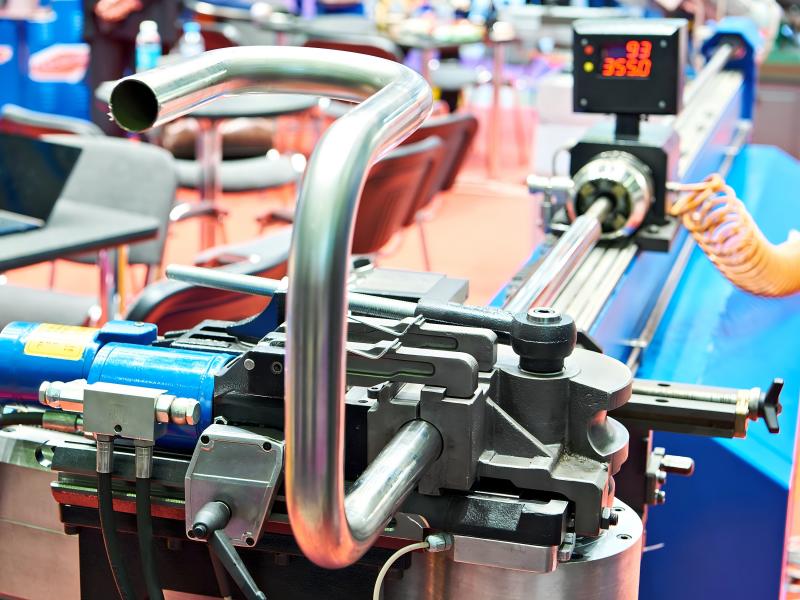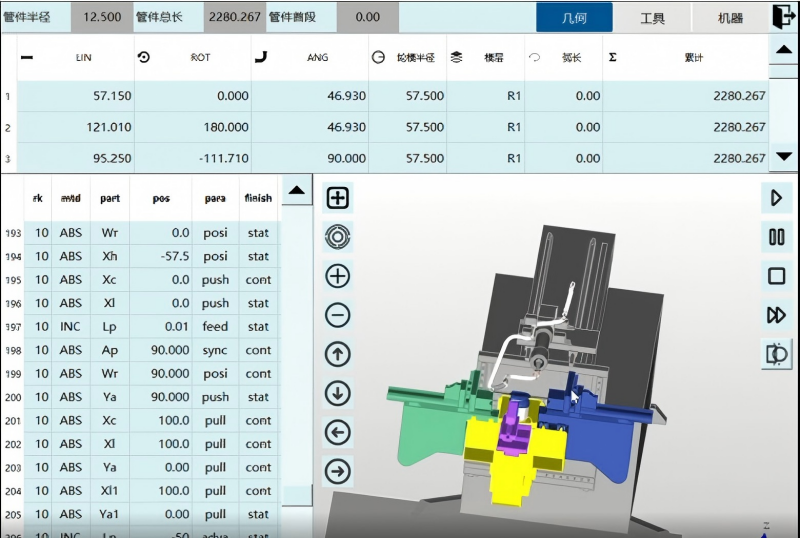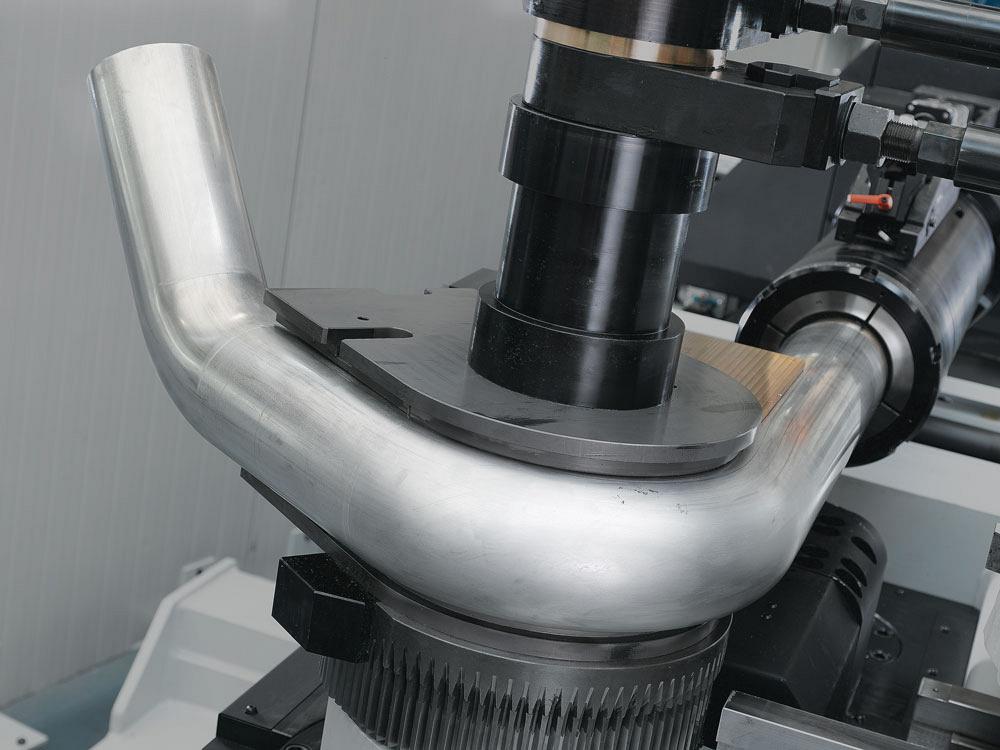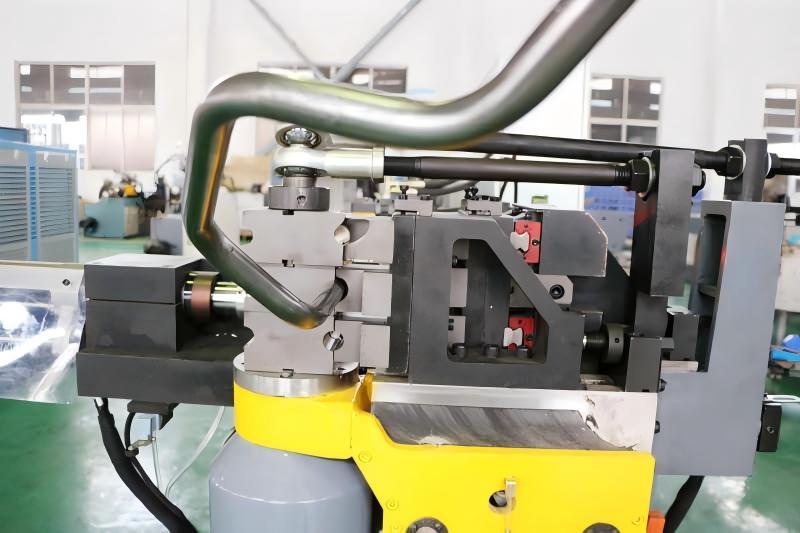مركز التوثيق
أدلة وإرشادات تقنية شاملة لمساعدتك على إتقان آلات HARSLE وتحسين كفاءة تشغيل المعادن لديك
كيفية تقييم إنتاجية آلة ثني الأنابيب؟
When investing in a new tube bending machine, one of the most critical factors to consider is productivity. Understanding Tube Bending Machine Productivity helps you determine whether the equipment can meet your production targets, reduce downtime, and maintain consistent quality. In this guide, I’ll explain the key aspects you should analyze before purchasing — including cycle time, automation level, tooling setup, and energy efficiency. Whether you’re running a small fabrication workshop or a large industrial plant, this article will help you make an informed and profitable decision.
Key Factors That Define Tube Bending Machine Productivity
1. Understanding Machine Cycle Time

The first step in evaluating productivity is analyzing the cycle time per bend. Cycle time refers to the total duration required to complete one bending operation, including clamping, bending, and unloading.
A shorter cycle time directly improves output per shift. High-end CNC tube benders usually feature servo-controlled axes و automated feeding systems, which can reduce cycle time by up to 30% compared to manual or semi-automatic machines.
When testing a machine, always measure the full cycle from tube loading to unloading and compare it with your production goals.
2. Evaluating Automation and Control Systems
Modern machines offer a wide range of automation levels — from NC-controlled single-axis benders to fully CNC multi-axis machines with automatic loading, feeding, and bending.
The higher the automation, the less human intervention is required, which increases productivity and consistency.
If your production involves repetitive parts, a CNC machine with programmable sequences will not only save time but also minimize operator error. For complex geometries, consider models with multi-stack tooling و برنامج محاكاة ثلاثية الأبعاد that can optimize the bending path automatically.

3. Setup Time and Tool Change Efficiency
In tube fabrication, setup time can significantly affect daily output.
A machine that allows quick tooling adjustments, automatic calibration، و memory storage of bending programs can help reduce downtime between batches.
Before purchasing, check how easily the tooling can be changed and whether the machine supports auto-centering clamps أو quick-release dies. The faster your setup, the higher your overall Tube Bending Machine Productivity.
4. Material Handling and Feeding Accuracy
Efficient material handling is another major factor in productivity. A servo-driven feeding system ensures consistent positioning of the tube for each bend, maintaining both accuracy and speed.
For long or heavy tubes, an automatic loading system أو robotic arm integration can minimize manual labor and reduce operator fatigue. This is especially valuable for production lines that run continuously or handle large batches of identical parts.

5. Energy Consumption and Operating Costs
A productive machine is not only fast but also cost-efficient. Evaluate the energy consumption per cycle to understand how much power your bending process will use.
CNC tube benders equipped with servo-electric technology often consume less energy than traditional hydraulic machines while maintaining precise motion control.
Over time, this contributes to lower operational costs and higher profitability, which are essential indicators of overall productivity.
6. Quality Consistency and Error Rate
Productivity isn’t just about speed — it’s also about consistency.
Machines with real-time angle correction systems, torque sensors، و feedback loops can detect and correct bending deviations automatically.
Fewer rejected parts mean less rework and higher net productivity. Always request a bending test or demonstration to see how the machine performs under real conditions and how it handles different materials and diameters.
How to Measure Productivity in Real Conditions
1. Calculate Output per Shift

Estimate the number of finished bends or components a machine can produce in one shift. Include time for loading, unloading, setup changes, and operator breaks to get a realistic figure.
This will help you determine if the equipment can meet your production volume requirements.
2. Compare Production Cost per Part
By dividing the total operational cost (energy, labor, maintenance) by the number of finished parts, you can calculate the cost per bend.
A machine that offers a lower cost per part with stable quality is more productive in the long run.
3. Consider Maintenance and Downtime

Even a fast machine can be unproductive if it requires frequent maintenance.
Check whether the design allows easy access to hydraulic systems, quick diagnostic functions، و predictive maintenance alerts.
Machines with remote monitoring and support capabilities from the manufacturer can further reduce downtime.
الأسئلة الشائعة
How do I know if a tube bending machine is suitable for high-volume production?
Look for models with multi-axis CNC control, automatic feeding, and fast cycle times. These features are designed for large-scale, continuous production with minimal manual intervention.
Does higher automation always mean higher productivity?
Not necessarily. While automation improves consistency and reduces labor, it must match your part complexity and batch size. For small or custom jobs, a semi-automatic model might offer better flexibility.
What factors affect bending accuracy and repeatability?
Key factors include material quality, tooling precision, servo motor stability, and the machine’s control software. A system with real-time feedback and auto-compensation ensures consistent bending angles.
How often should productivity be evaluated?
It’s recommended to assess productivity quarterly by tracking output data, machine utilization rate, and downtime. Regular evaluation helps identify optimization opportunities and justify future upgrades.
خاتمة
التقييم Tube Bending Machine Productivity before buying is essential to ensure your investment delivers real value.
By analyzing factors such as cycle time, automation level, setup efficiency, and energy consumption, you can choose a machine that fits your production goals perfectly.
A productive tube bender not only boosts output but also ensures long-term cost efficiency and stable quality.













